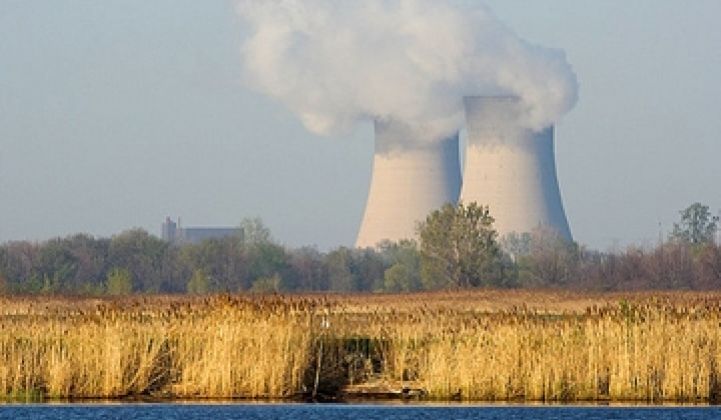To meet the current goals for greenhouse gas emissions, the U.S. would have to build 187 new nuclear plants by 2050, according to former New Jersey Governor Christine Todd Whitman, who now co-chairs the Case Energy Coalition, which advocates increased nuclear power in the U.S.
But the industry will settle for 25 to 30 by 2030, she said. That would be enough to meet the expected growth in demand for electricity in the U.S. while keeping nuclear around 20 percent of the mix. The U.S. currently has 104 reactors.
Although a commercial reactor hasn't been built in decades here, a new wave of reactors appears to be becoming financially, technically and politically possible, she added. 32 new nuclear plants at 21 sites have already been proposed for the U.S.
"It can be done. They've done it in the past, building four to five a year," she said. The first new reactor might go up in the U.S. in six to seven years.
"We are still going to need baseline power," she added.
While Whitman is clearly an advocate, the call to more seriously consider nuclear and even expand the nuclear footprint in the U.S. and Europe continues to grow. Energy Secretary Steven Chu has come out in favor of expanded nuclear and so have a number of high-profile academics.
"I don't see a sensible solution [toward reducing carbon emissions] without having nuclear as part of the mix," said Dan Kammen, the UC Berkeley professor who also runs the Renewable and Appropriate Energy Lab at the school at a recent event sponsored by Google. MIT's Ernie Moniz says nuclear might be the most practical to de-carbonize energy production in New England.
Skeptics like Amory Lovins of the Rocky Mountain Institute, however, have argued that centralized, large power plants are riskier and more costly than distributed power like solar and wind and energy efficiency techniques. Rising prices for steel and concrete, not to mention security and waste handling, will invariably hurt the rosy economics the industry touts, Lovins adds.
In any event, the debate is on. So what has changed for the industry? First, the technology has improved, according to Whitman. In the past, nuclear reactors were largely one-of-a-kind creations. 95 of the 104 reactors in the U.S. are based around different designs. The industry has moved toward standardized reactors, which cuts down the cost and certification time.
"There will be four [designs] or five at the most," she said.
Reprocessing has also made advances. Right now, the U.S. stores spent nuclear fuel. Not only does that create a nightmare over where to store it, it's not efficient. Approximately 95 percent of the energy remains in the fuel, she argued.
"Reprocessing cuts that down to two to three percent," she said. "France, Russia and Japan all reprocess. In Japan, the remaining fuel is reprocessed in such a manner to prevent theft. "You can't get to it without dying," she said.
These technological changes in turn could help curb one of the notorious historical problems for nuclear: outrageous delays and cost overruns. "You are probably not going to see spikes," in rising costs with standardization, she argued.
And politically, Whitman asserts that nuclear can be an engine for jobs. Building a reactor can employ 1,200 to 4,000 people, she said and operating a reactor will employ 400 to 700. The total economic output to a community from a single reactor can be as high as $430 million a year.
A big test for the industry lay in the climate bills. The nuclear industry wants to qualify for loan guarantees. Without them, Wall Street banks may not back new nuclear plants. If the ultimate law only allows loan guarantees for "renewable" energy, nuclear won't qualify.
"Uranium is not renewable," she said.
If the law allows guarantees to go to "clean" energy companies, nuclear will qualify.
It could be a long debate. Whitman, a Republican, predicted that the Obama Administration may not get a climate bill passed until 2011.
"2010 is an election year," she said.
Photo via Flickr/Creative Commons.



